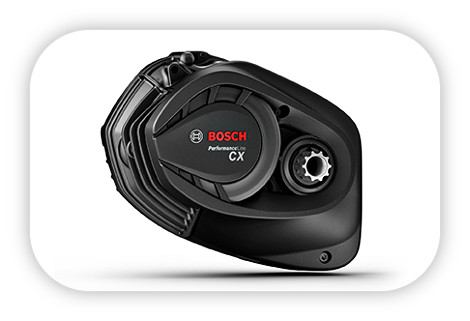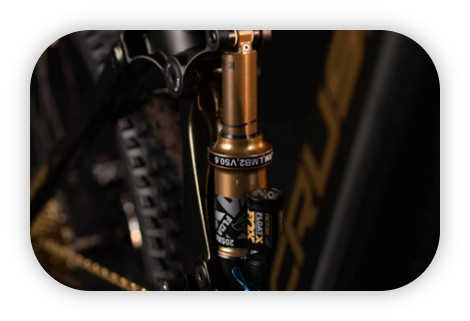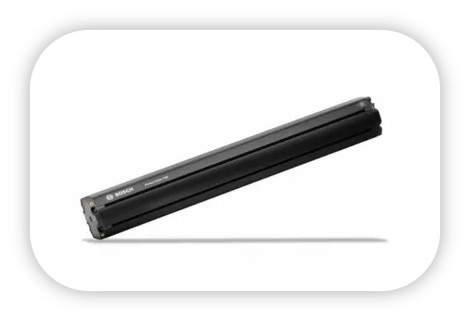Full-Suspension Mountain E-Bike Crussis e-Full 12.9 – 2024 SALE
3 559,60 €
5 599,60 €

Compared products
Selected products (fitness trainers) over 165 EUR are covered by an extended warranty of 10 years. And that’s because we are confident in the quality of our products! Extended 10-year warranty also applies to all bicycles Kellys, 4EVER, Devron, DHS, Kreativ, as well as all e-bikes. You can rely on our products. The 10year warranty covers the trainer/bike frame only.
The greatest e-bike of the season is finally here! Inspired by the Czech hockey legend, the Mountain E-Bike Crussis LEGEND 68 is an ideal bike for demanding riders. What’s more, the entire Crussis team participated in the bike’s creation. Thanks to its black-and-gold design, you can rest assured that everyone will notice you on your rides.
It’s the very first Crussis bike to feature a carbon frame. On top of that, it’s full-suspension and powered by a top-shelf BOSCH Performance CX drive. In addition to the drive, the bike also boasts a Bosch PowerTube 750 high-capacity battery, that will take you as far as 170 km on a single charge, allowing you to make the most of each and every ride. You can control the bike’s functions, including walking assistance, on a BOSCH Kiox 300 LCD control panel.
The 12-speed SRAM Eagle XX1 derailleur set takes care of gear shifting. The top-class FOX 36 Float e-MTB+ suspension fork with 150mm travel will make your ride even more comfortable. The lightweight FOX Float X rear shock with a sophisticated adjustment system provides rear suspension.
The wide 29” wheels with 2.6” MAXXIS Rekon tires provide outstanding quality that will not let you down even on the most challenging terrain. The SRAM Code R hydraulic brakes will keep you safe during the ride.


The best on the market, the BOSCH Performance CX Smart System drive provides outstanding performance, reliability, accuracy and sensitivity. It also offers high torque (up to 85 Nm) while maintaining low consumption.
The electric engine features both a pedaling sensor and a torsional pedaling force sensor. A control unit continuously evaluates the pedaling force and regulates the engine power accordingly, i.e. the more you pedal, the more the engine will assist you.


With a 150-mm travel and a 51-mm offset, the FOX 36 Float eMTB+ 29” air-suspension fork is the best for you can wish for in an e-bike.
Then there’s the FOX Float X, 205x60mm rear air shock. With sophisticated suspension and superior performance, it’s ideal for trail riding. What’s more, the rear shock is light and features a large piston with a large air capacity for a more precise adjustment.


The BOSCH Powertube 750 36V/20.1 Ah (750 Wh) high-capacity battery is the heart of the bike. The battery is fully integrated into the frame, making the bike (along with the center drive) well-balanced. The battery allows for a distance range of up to 170 km on a single charge (depending on the trail profile).

 E-bikes CRUSSIS are assembled directly in the Czech Republic, under professional supervision and in cooperation with cycling experts. This progressive Czech brand guarantees quality, modern design and maximum enjoyment from the ride.
E-bikes CRUSSIS are assembled directly in the Czech Republic, under professional supervision and in cooperation with cycling experts. This progressive Czech brand guarantees quality, modern design and maximum enjoyment from the ride.
Battery storage and maintenance: We recommend storing the battery (or the entire product including the battery) in a shady, dry place at temperatures between 10 ° C and 20 ° C. If you do not intend to use the product for a long time, we recommend charging the battery and recharging it to 100% capacity at least once a month. Follow these guidelines to prevent the battery's nominal capacity from declining rapidly over its lifetime.
Technical description:
|
Frame |
Carbon 6061 (17“, 19“, 21“) |
|
Drive |
BOSCH Performance CX Smart System, center drive, 250W (max 850W), 85 Nm |
|
Battery |
BOSCH Powertube 750 (750 Wh/20,1 Ah) |
|
Charger |
BOSCH quick charger 4A |
|
Pedaling sensor |
Torsional |
|
Distance range |
Up to 170 km |
|
Rear derailleur |
SRAM XX1 Eagle, 12 speeds |
|
Gear shifter |
SRAM XX1 Eagle |
|
Number of speeds |
1 x 12 |
|
Cassette |
SRAM CS-XG 1299 Eagle, 10-52Z Gold |
|
Chain |
SRAM XX1 Eagle Gold, 12 speeds |
|
Fork |
FOX 36 Float eMTB+ 29", travel 150 mm, offset 51 mm, lockout |
|
Rear suspension |
FOX Float X, 205x60 mm |
|
Brakes |
Hydraulic SRAM Code R, rotor 200 mm (front), 180 mm (rear) |
|
Control panel |
BOSCH Kiox 300 |
|
Tires |
MAXXIS Rekon 29*2.6 |
|
Valve |
AV (Schrader valve) |
|
Spokes |
DT SWISS H 1900 SPLINE 29" - 35 mm, IS 15/110 mm (front) / DT SWISS H 1900 SPLINE 29" - 35 mm, IS 12/148 mm SRAM XD (rear) |
|
Headset |
Semi 11/8 |
|
Stem |
RACEFACE Chester AL 40 mm, angle 0° |
|
Handlebars |
RACEFACE Chester AL 35 mm, width 780 mm |
|
Grips |
CRUSSIS silicone |
|
Seatpost |
FOX Transfer 30.9 mm, telescopic travel 125 mm or 150 mm |
|
Seat |
Fizik Terra Aidon X5 |
|
Weight limit |
There is no established standard for weighing e-bikes. Some manufacturers say their bikes are lighter than they actually are. If you want to know how heavy the bike is, you’ll need to have it weighed at the store. |
|
Weight |
120 kg |
Warning: The factory setting for maximum speed is 25 km/h to meet the European standard for e-bikes. However, the setting can be manually changed to a higher speed limit. Bear in mind that in such a case the e-bike no longer meets the required standards and cannot be used on public roads!
CRUSSIS e-bike chart size
| Frame size | Height of user |
|---|---|
| 14″ | 135-155 cm |
| 17″ | 155-175 cm |
| 18″ | 160-180 cm |
| 19″ | 165-185 cm |
| 20″ | 170-190 cm |
| 21″ | 175-195 cm |
| 22″ | 180-200+ cm |
Note: The expected max. travel distance depends on various factors, such as the amount of electric assistance, user weight, terrain, wind and the inflation pressure, pattern and temperature of the tires. All stated travel distances are valid under optimal conditions, meaning even terrain with no wind, temperature of 20°C, extremely narrow tires with no profile and user weight under 70 kg.
| Battery | (max. range 180 km), 20 Ah/750 Wh, BOSCH PowerTube |
|---|---|
| Range | 180 km |
| Drive | Bosch |
| Program types | 5 programs |
| Motor | Bosch Performance CX, (central drive) |
| Drive | Central |
| Motor output | 250 W |
| Brakes | Hydraulic |
| Display | BOSCH Kiox 300 |
| Frame | Carbon |
| Suspension travel | 150 mm |
| Gear shifting type | lever |
| Number of speeds | 12 |
| Suspension | full suspesion |
| Fork | FOX 36 Float eMTB+ 29", 150mm suspension |
| Frame material | Carbon |
| Wheel size | 29 |
| Rear Shock | FOX Float X, 205x60 mm |
| Rear Brake | SRAM Code R |
| Front Brake | SRAM Code R |
| Type of e-bike | MTB, Full suspension |
| Rear hub | DT SWISS 370 (12x148mm) |
| Front Hub | DT SWISS 370 (15x110mm) |
| Rear tire | MAXXIS Rekon 29 x 2.6 |
| Front Tire | MAXXIS Rekon 29 x 2.6 |
| Weight limit (kg) | 120 kg |
| Gear shifting | SRAM XX1 Eagle Single Click |
| Year | 2024 |
| Rear Derailleur | SRAM XX1 Eagle 12-S |
| Crank Set | SRAM X-SYNC 2 34Z |
| Cassette | SRAM CS-XG 1299 Eagle, 10-52Z Gold |
| Chain | SRAM XX1 Eagle Gold |
| Front Rim | DT SWISS Alu, hooked/crotchet tub. TC 35 mm |
| Rear rim | DT SWISS Alu, hooked/crotchet tub. TC 35 mm |
| Crankset | SRAM X1 E-MTB ISIS 170 mm |
| Handlebar grip | RACE FACE Chester 35 RiseBar 780mm |
| Grips | RACEFACE Getta, 33 mm |
| Handlebar stem | RACEFACE Chester AL 40 mm, 0° |
| Head Tube | FSA Orbit 57E, 1,5" |
| Saddle | Fizik Terra Aidon X5 |
| Seat post | FOX Transfer 30,9 mm, extendable, 125 mm or 150 mm suspension |
We are sorry, but this product is no longer available.